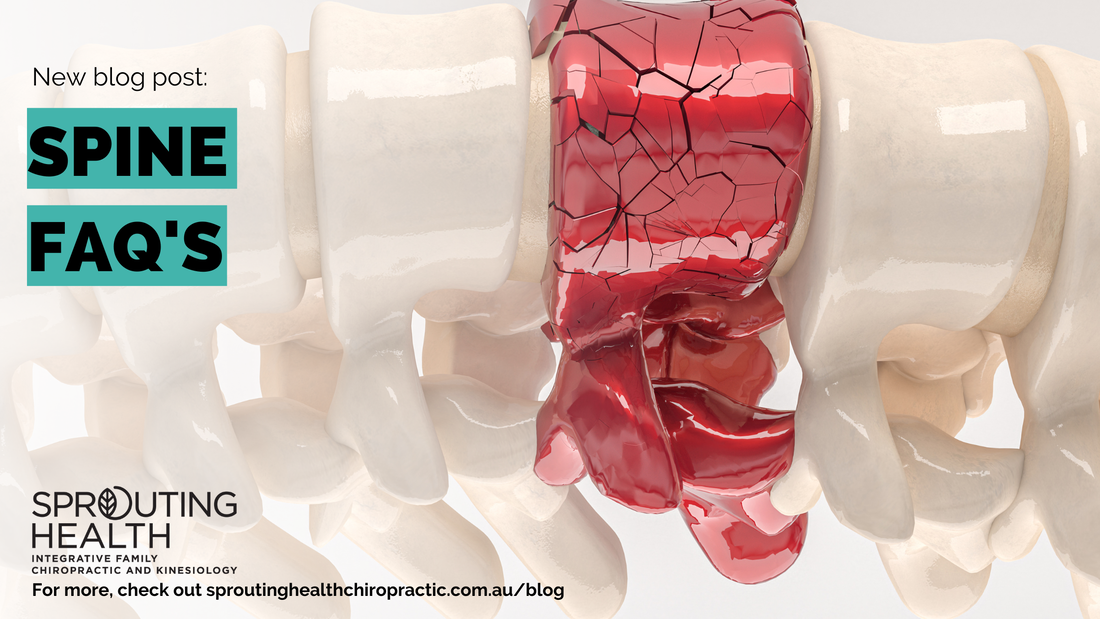|
How much do you know about your spine? Obviously it makes up a large portion of your skeletal system and keeps you upright but let’s look into what makes up your spine and how it works!
So many moving parts.. There are 5 different areas that make up your spine: the cervical spine (neck), the thoracic spine (mid back), the lumbar spine (low back), the sacrum (joins the spine to the hips), and the coccyx (the ‘tailbone’). Each of these parts of the spine play very important parts in keeping you upright and mobile! The cervical spine is made up of seven bones known as ‘vertebrae’ and their main job is to hold up your head and help it move around. The thoracic spine is made up of twelve vertebrae, and your lumbar spine has five! Lots of curves! When viewed from the side, an adult spine has a natural S-shaped curved. The neck and low back curve backwards while the midback curves forwards. These curves play a big part in keeping you upright, balanced, and moving. Your posture greatly influences these curves and too much or too little curve can result in some discomfort and may eventually lead to increased degeneration in the long term. Some people may have a slight sideways curve when viewed from the front and can be either mild and have no other effects, or become severe and result in a condition known as scoliosis. Discs? You’ve probably heard the phrase ‘slipped a disc’ before but what are these discs and what role do they play? Each spinal bone (or ‘vertebra’) is separated from the one next to it by an intervertebral disc, which act like cushions or shock absorbers. These discs are adhered to the bones they support and are made of very strong fibrous bands. The structure and function of these discs do not allow them to ‘slip’ out of place as many believe, but the fibres can be injured which may result in the disc bulging outwards and causing pain. Movement and rest are both very healthy for your discs and it’s important to perform both daily! The spinal cord! Your spinal cord runs from your brain stem (the very top of your neck) all the way down to the top of your lumbar spine where it starts branching off to different areas. Your spinal cord is approximately the thickness of your thumb and acts as an information superhighway, transmitting messages between your brain and body constantly. Spinal nerves branch off from the spinal cord at every vertebral segment and act as ‘telephone lines’ between the spinal cord and that part of the body. The spinal cord travels down through a canal that passes through each vertebra in your spine and is protected by this structure. Damage to the spinal cord can result in a loss of sensory and motor function below the level of injury. Did you learn anything new here? If you have any questions about the spine or what you can do to keep those discs healthy or improve your posture to help your curves, please ask one of our chiropractors – they work with spines all day long!
2 Comments
Elisa
9/9/2023 03:00:52 pm
Thank you for sharing your insights on this topic. Your post has given me a fresh perspective. <a href="https://43240hqt9xbu2vecvv3vo96nby.hop.clickbank.net" target="_blank">click here</a> for more insights.
Reply
Archit Mehta
25/9/2023 07:26:03 pm
Your post demonstrates a deep understanding of the subject matter. It's evident in the comprehensive coverage and detailed explanations. To learn more, <a href="https://9428c31bur9z2y90xvu6xmap8g.hop.clickbank.net" target="_blank">click here</a>.
Reply
Leave a Reply. |
AuthorBlogs by the team at Sprouting Health Archives
July 2024
Categories |


 RSS Feed
RSS Feed
